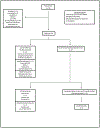Rumination-focused cognitive behavioral therapy decreases anxiety and increases behavioral activation among remitted adolescents
- PMID: 33737799
- PMCID: PMC7968389
- DOI: 10.1007/s10826-020-01711-7
Rumination-focused cognitive behavioral therapy decreases anxiety and increases behavioral activation among remitted adolescents
Abstract
Objectives: Rumination involves a repetitive, passive focus on one's thoughts and feelings and has been hypothesized as a mechanism contributing to multiple psychopathologies. The current investigation explores secondary outcomes from a pilot study to examine whether rumination-focused cognitive behavior therapy (RFCBT) alleviates symptoms of anxiety, increases behavioral activation, or increases global functioning among adolescents with a history of Major Depressive Disorder (MDD).
Methods: Thirty-three adolescents were randomized to receive either RFCBT (n = 17) or assessment only (AO; n = 16) over the course of eight weeks. Mixed effects regression models were used to conduct intent-to-treat (ITT) analyses.
Results: The quadratic interaction for group-by-time-by-time was significant for anxiety. Adolescents in the RFCBT group experienced a significant decrease in anxiety across the first six weeks of intervention (F = 7.01, df = 108.49, p = .009). The group-by-time interaction was significant for the behavioral activation outcome (F = 4.28, df = 25.60, p = .049) with youth randomized to RFCBT demonstrating increasing activation compared to AO. Global functioning did not significantly differ between groups (F = .40, df = 1, p > .05).
Conclusions: Preliminary evidence suggests that RFCBT may hold promise as an intervention that alleviates both depressive and anxiety symptoms when comorbid.
Keywords: adolescence; anxiety; major depressive disorder; rumination; treatment.
Conflict of interest statement
The authors report no conflicts of interest.
Figures




References
-
- American Psychiatric Association. Diagnostic and Statistical Manual of Mental Disorders: DSM-IV-TR. American Psychiatric Association, 2000.
-
- Angold A, Costello EJ, & Erkanli A (1999). Comorbidity. Journal of Child Psychology and Psychiatry, 40, 57–87. - PubMed
-
- Barlow DH, Allen LB, & Choate ML (2004). Toward a unified treatment for emotional disorders. Behavior Therapy, 35(2), 205–230. - PubMed
-
- Brent DA, & Kolko DJ (1998). Psychotherapy: Definitions, mechanisms of action, and relationship to etiological models. Journal of Abnormal Child Psychology, 26(1), 17–25. - PubMed
-
- Brooks SJ, & Kutcher S (2001). Diagnosis and measurement of adolescent depression: a review of commonly utilized instruments. Journal of Child and Adolescent Psychopharmacology, 11(4), 341–376. - PubMed
Grants and funding
LinkOut - more resources
Full Text Sources
Miscellaneous
